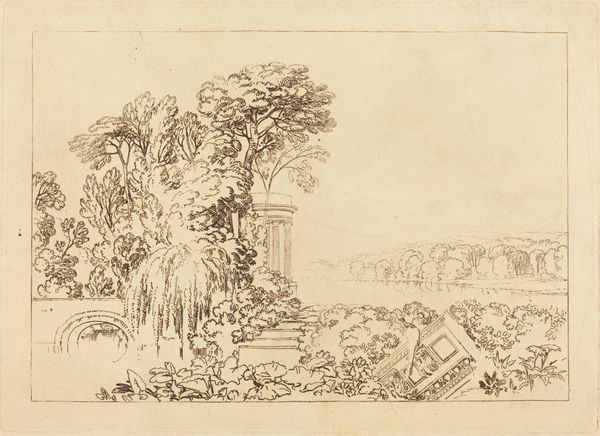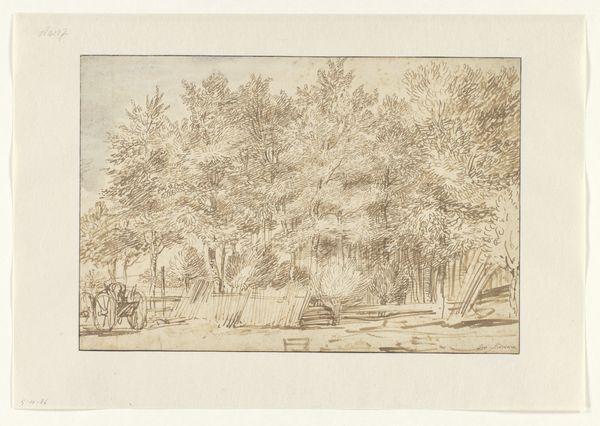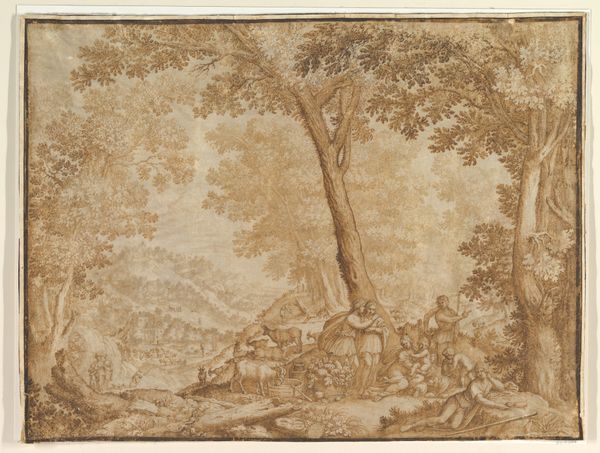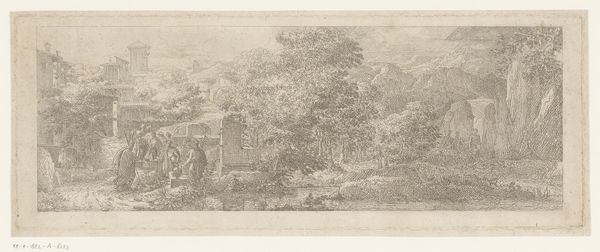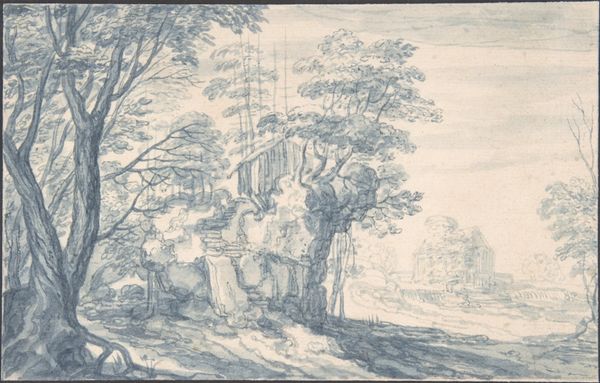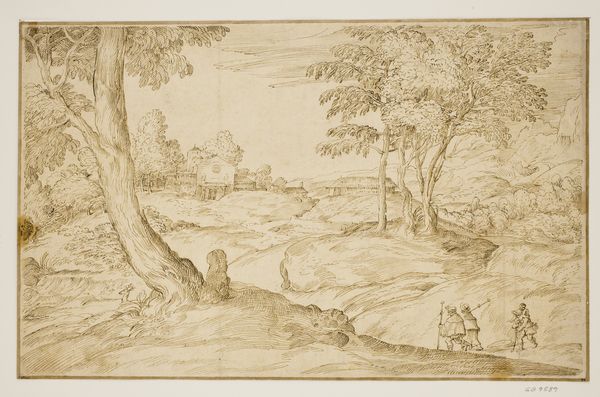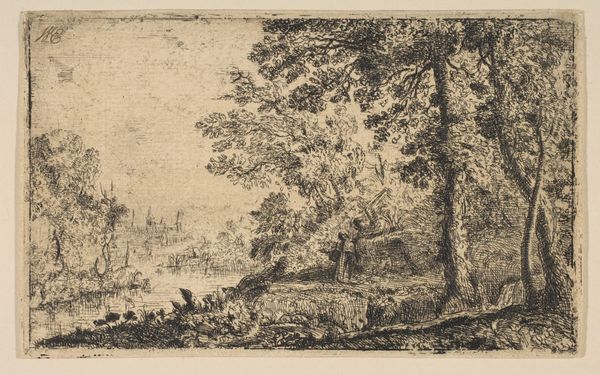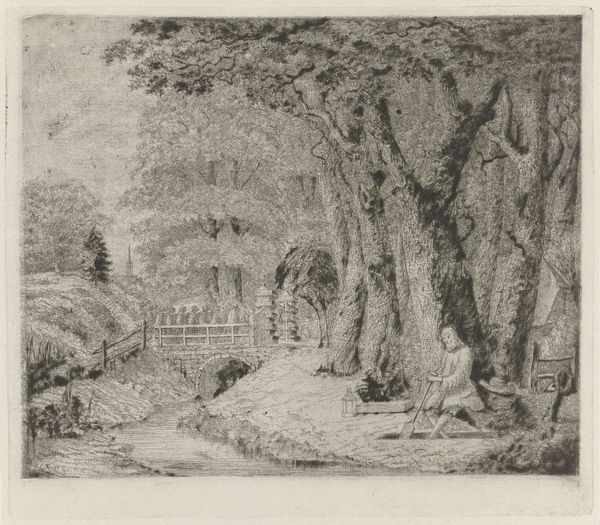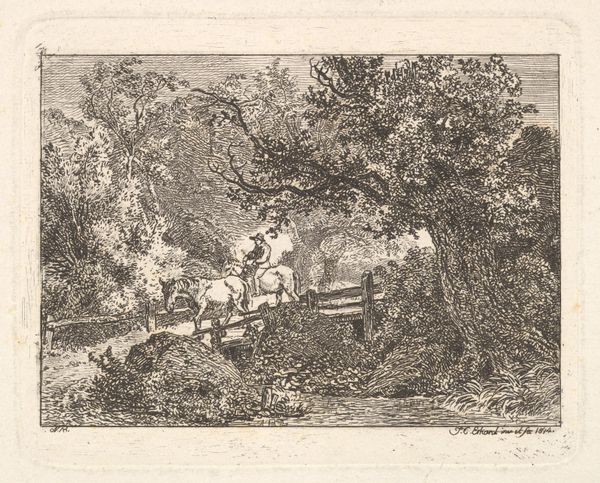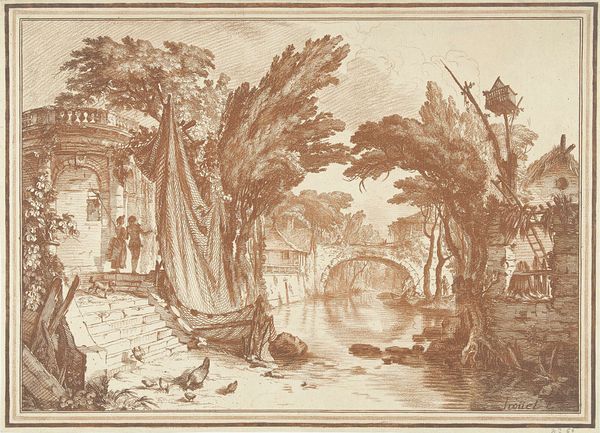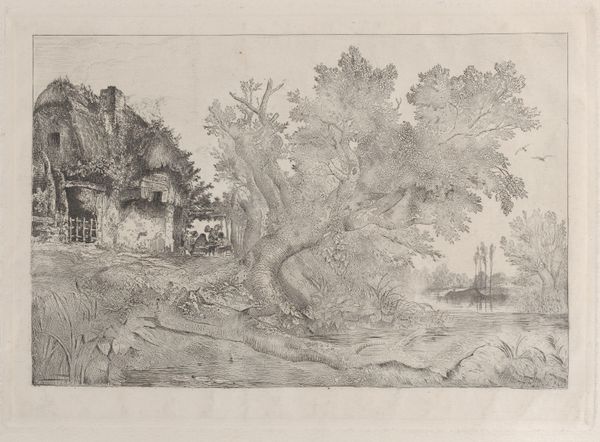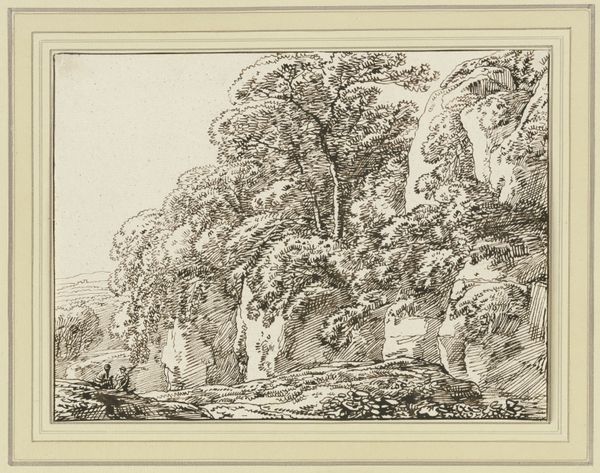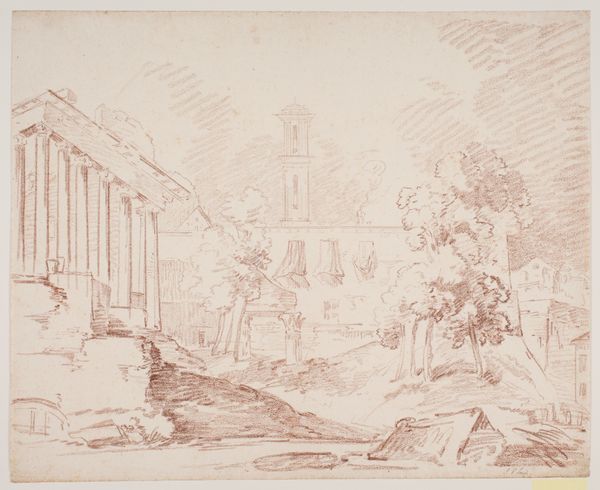
St. Joseph Charpentier (St. Joseph, Carpenter) 1839 - 1885
0:00
0:00
Dimensions: Mount: 6 1/8 × 9 3/8 in. (15.5 × 23.8 cm) Sheet: 3 9/16 × 7 in. (9 × 17.8 cm)
Copyright: Public Domain
Curator: Rodolphe Bresdin's etching and engraving, St. Joseph Charpentier, made between 1839 and 1885, presents a scene of familial labor against a detailed, almost dreamlike landscape. It resides here at the Metropolitan Museum of Art. Editor: It has an undeniably intimate, even humble feeling. Despite the incredible detail in the rendering of the trees and textures, there is something very contained about the light, focused on the activity within. Curator: Bresdin often situated his figures within meticulously rendered landscapes. Here, we can analyze the symbolism of St. Joseph as a working-class figure, challenging traditional artistic portrayals. His carpentry is not just labor; it's a connection to the working class. Editor: Absolutely. The symbol of Joseph as the carpenter goes further, suggesting both stability and quiet strength, both personal and societal. Think of the visual weight given to the natural symbols around the Holy Family -- nature itself reflecting their intimate spirituality. Curator: The figures’ positioning reinforces traditional family roles, but, more critically, highlights the social and economic circumstances shaping those roles. Look at the grotto; consider class-based access to resources. Bresdin’s art consistently critiques power structures, does it not? Editor: His ability to infuse devotional imagery with this subtle domesticity underscores an interesting, almost democratic quality. There’s an accessibility through these figures that breaks from established religious art, an art primarily meant for upper classes, that perhaps Bresdin intended as an open door for wider access. Curator: Considering Bresdin's Romantic leanings and personal politics, I find it interesting to explore St. Joseph Charpentier not just as a religious image, but as a radical statement. An interesting commentary on socioeconomic struggles and the power of art as a catalyst. Editor: Looking closely, one recognizes enduring symbols in their very ordinariness. And it offers ways to view family not just within this narrative but within our contemporary context too. Curator: Indeed. It forces us to interrogate what elements remain central to family experience despite shifts in structure, time, and culture. Editor: Very well. I think it's fair to say that we have found here today symbols of enduring value that still deeply resonates, centuries later.
Comments
No comments
Be the first to comment and join the conversation on the ultimate creative platform.
